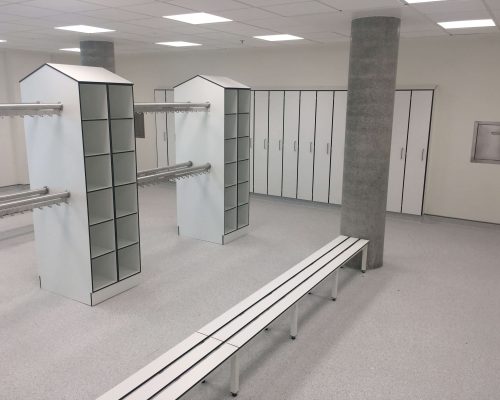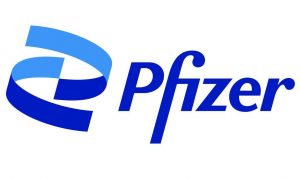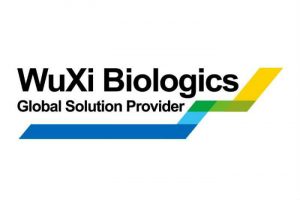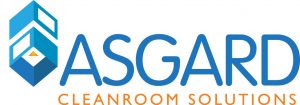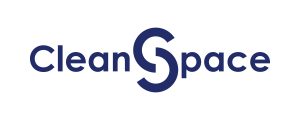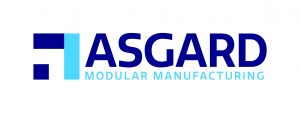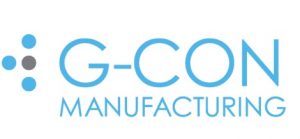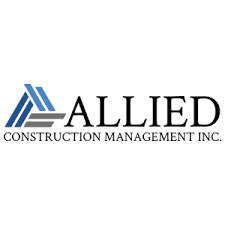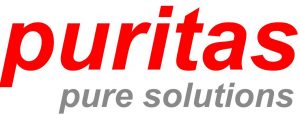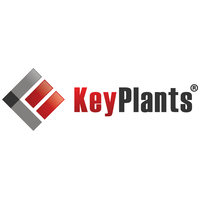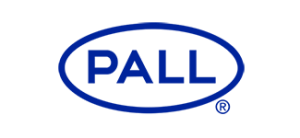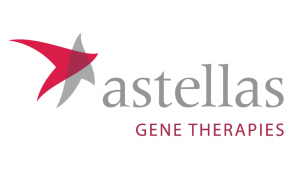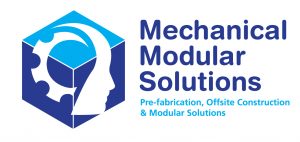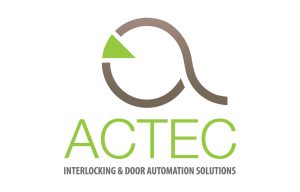A: An Anti-Static Agent is a substance used to remove or reduce the buildup of static electricity from surfaces or materials. The anti-static agent works by either been a conductive substance or absorbing water from the air. Examples of anti-static agents are indium tin oxide, aliphatic amines or quaternary ammonium.
A: Biocontainment refers to the physical containment of pathogenic organisms such as bacteria and viruses, in an secure isolated environment. Such environments can be provided by biological safety cabinets (BSC) or secured cleanrooms. The aim of biocontainment is to prevent the release on the dangerous pathogens into the public and prevention is infection of the research staff.
A: Cleanroom Construction involves the building of speciality doors, walls, windows, ceilings, light systems, airflow and filter systems to form a complete controlled environment all to pre-requisite standards.
A: Electrostatic Discharge or ESD is an unwanted electric current that passes through two objects due to contact or electrostatic field. Electrostatic discharge is of concern to the electronics industry because in can cause damage to electronic products.
A: Federal Standard 209E (FED-STD-209E) was a standard that classifies cleanrooms in relation to the limits of airbourne particles in the air of the cleanroom per volume. The classification divides the cleanrooms into six classes. Class 1 Class 10 Class 100 Class 1000 Class 10000 Class 100000 The FED-STD-209E was superseded by the ISO standard 14644 under the recommendation of the IEST Working Group CC100. Despite the cancellation of the Federal Standard, it is still used throughout the cleanroom industry.
A: Individual cleanrooms will have their own gowning up guidelines and procedures. The following is an example of a gowning up procedure: Gowning up should be carried out in this order: Face Mask, Safety Glasses, Hood, Coverall (bunny suit), Shoe covers/boots and finally Clean room gloves. Individual cleanroom policy should be followed when deciding what to do with the protective clothing once it has been used. This will largely depend on whether the garments are disposable or reusable. Gowning up will usually take place in the gowning room where there will be a stepover bench that spans the width of the room. The area at one side of the stepover bench is "dirty" and the other is "clean". Gowning up starts on the dirty side and as you place a cover on each shoe, move the foot over the bench and place it on the clean side. This ensures that no dirt is carried into the clean side of the gowning room.
A: A laboratory device which flows filtered air onto a specially enclosed work surface. Typically, eye banking uses vertical flow hoods, which projects clean filtered air down onto the work surface. This prevents particulate and microbial contamination, while protecting the technician from the potential exposure to infectious material being handled.
A: A mobile cleanroom is pre-fabricated, pre-tested and certified. They are often built inside cargo container and can be moved to the location where it is needed. Mobile cleanrooms are stand-alone enclosures containing their own mechanical system for basic comfort cooling or for precise temperature and humidity control, emergency power, lighting, water, ancillary support systems and a filtration system to meet the specified cleanliness levels, including HEPA or ULPA filtration for applications requiring a certified cleanroom environment.
A: Opaque hardwall cleanroom panels provide a good resistance to alcohol and solvents and give a bright, white, easy to clean finish to walls.
A: Portable cleanrooms are prefabricated rooms. They go by a variety of names including softwall cleanrooms, soft wall cleanrooms, modular cleanrooms, clean isolators and portable softwall cleanrooms. Portable cleanrooms can be made from a variety of materials and can be tailored to meet specific requirements.
A: In relation to cleanrooms it is the state of being free from disease-causing contaminants, such as bacteria, viruses, fungi, and parasites.
A: Tacky Mats is a registered trademark with Liberty Industries, the tacky mat provides foot sole contamination control for various industry requirements. The tacky mat is an adhesive covered mat that removes dirt and dust from the soles of shoes when they are walked upon. Tacky Mats are usually placed at entrances to cleanrooms or sterile environments to help limit contamination.
A: ULPA (Ultra Low Penetration Air) filter is an air filter that offers 99.999% efficenency for removal of particles of 120 nanometers or more in diameter from the air.
A: A vent protector can stop any large object entering the cleanroom.
A: Wet Benches are work stations that are used for wet etching and wafer cleaning. There are various types of wet benches depending on the processes and materials required. Some types of Wet Benches include: Diffusion Wet Benches Gallium Arsenide Wet Benches General Use Wet Benches Metal Wet Benches Nitride Wet Benches Non-Metal Wet Benches Silicide Wet Benches Solvent Wet Benches
A: An Anti-Static Agent is a substance used to remove or reduce the buildup of static electricity from surfaces or materials. The anti-static agent works by either been a conductive substance or absorbing water from the air. Examples of anti-static agents are indium tin oxide, aliphatic amines or quaternary ammonium.
A: The antistatic mat is made with a conductive material, which is grounded to remove static electricity from an electronic environment by providing a safe path to ground. The antistatic mat usually comes with a plug that is required to be connected to a grounded line. Also some mats come with connection points for antistatic wristbands. The antistatic mat is sometimes referred to as a ground mat.
A: An Anti-Static Wristband is a wristband worn to safely ground people involved in electronic manufacturing, in order to prevent electronic discharge. The wristband protects the person against a shock. The wristband is usually made of carbon and the wristband is connected to the ground by a stretchable coil. The ground connections in industry are made to an Earth Bonding Point, whereas personal connections will be used by a crocodile clip. There are also ankle straps, which are not usually connected to the ground and are used in cases where the person is needed to move around, like a surgical theatre.
A: Airborne particle counts are an air sampling method, used to determine if a cleanroom is meeting the required particle concentration limits within its ISO 14644-1:2015 class parameters.
A: Airborne particles are sub-micron particles, which are invisible to the naked eye.
A: With regards to cleanrooms, air cleanliness is usually measured by taking airborne particle counts.
A: The amount of time a cleanroom can completely replace its air volume within an hour.
A: Feet that can be adjusted to ensure a level system is created, even on uneven floors.
A: An actuator is a mechanical component that can move a mechanism or system.
A: Biocontainment refers to the physical containment of pathogenic organisms such as bacteria and viruses, in an secure isolated environment. Such environments can be provided by biological safety cabinets (BSC) or secured cleanrooms. The aim of biocontainment is to prevent the release on the dangerous pathogens into the public and prevention is infection of the research staff.
A: The biological safety cabinet (sometimes referred to as BSC) are stand alone containment units in which harmful agents or sensitive products may be placed. The BSC can provide laboratory personnel protection against harmful material that is stored in the cabinet. Alternatively, the biological safety cabinet may also provide protection for the product within the cabinet against outside harmful agents. Biological Safety Cabinets are divided into three class, with assigned biosafety levels to each class. The three classes are: Class I Biological Safety Cabinet is for environmental and personnel protection only and has biosafety levels of 1,2,3. Class II Biological Safety Cabinet is for environment, personnel and product protection and has a biosafety levels of 1,2,3. Class III Biological Safety Cabinet is for protection against high risk bio agents and has a biosafety level of 4.
A: In the cleanroom industry the term biosafety refers to the minimisation of any potential risk that may occur from using biotechnology. Biosafety can refer to safety precautions taken against potential harmful exposure to tissue, organ, virus, gene therapy products in a medical setting. In chemical industry the protection may be against such agents as nitrates, PCB levels. In the agricultural or food industry the protection may be against bacteria, viral genes or prions. The Biosafety levels are measured in a 1,2,3,4 protocol, 4 being the most dangerous.
A: The biosafety level is an agreed protocol level of precautions required to be implemented in an containment facility to isolate potentially harmful biological agents (e.g. virus, bacteria, fungi, prions, toxins etc). The biosafety levels are 1, 2, 3, 4. 4 being the highest and most dangerous level. The levels were devised by the Centers For Disease Control And Prevention (CDC) in the USA. These biosafety levels have been adopted by the EU.
A: Biosecurity is a collection of measures that's aim is the prevention of the theft of important biological products. A comprehensive biosecurity strategy would encompass all potential risk area's including physical security, workforce security, substance security, logistical security, knowledge security, program and process security and accountability.
A: British Standard 5295 was a set of standards for the cleanroom industry layed out by the British Standards Institution. Sections of the standard have been superceded by the ISO 14644. There are five sections to the standard. Part 0: Definitions and Tems Part 1: Cleanroom and Device specifications Part 2: Construction & Design specifications Part 3: Operational & Discipline procedures Part 4: Monitering & Compliance specifications
A: A biosafety cabinet (BSC) also called a biological safety cabinet or microbiological safety cabinet is an enclosed, ventilated laboratory workspace for safely working with materials contaminated with (or potentially contaminated with) pathogens requiring a defined biosafety level.
A: Cleanroom Construction involves the building of speciality doors, walls, windows, ceilings, light systems, airflow and filter systems to form a complete controlled environment all to pre-requisite standards.
A: The airflow patterns that are generally found in cleanrooms are turbulent or laminar flow. The air entering a cleanroom from outside is filtered to exclude dust, and the air inside is constantly recirculated through high efficiency particulate air (HEPA) and/or ultra low particulate air (ULPA) filters to remove internally generated contaminants.
A: Cleanroom bench is a piece of furniture often found in cleanrooms. It is a work station that is usually made of stainless steel and can be altered and adapted to suit the activity and/or requirements of the cleanroom personnel.
A: See Clean Air
A: Cleanroom cabinets is a general term that can cover anything from storage furniture through to laminar flow cabinets.
A: Thorough testing and certification of your cleanroom environment. For more information please visit Microclean Solutions Cleanroom certification.
A: Cleanrooms are classified according to the number and size of particles allowed to be present in air within the cleanroom. There are four standards used in the classification of cleanrooms, listed below; Federal Standard 209E ISO Standard British Standard 5295 Pharmaceutical Cleanroom Classification The Federal Standard 209E was revoked in 2001 by the US Dept. of Commerce General Services Administration, however the standard is widely used by the industry.
A: Cleanroom cleaning is a broad term that may refer to the ongoing cleaning of a cleanroom or a super-cleaning that may occur at longer intervals. Both types of cleaning may be carried out by in-house personnel or professional cleaners. The intensity and frequency of cleaning will largely depend on the activities that are being carried out in the cleanroom, the classification of the cleanroom and also whether any breaches have occurred in the contamination control procedures.
A: Cleanroom compatible means that the product is suitable for use in a cleanroom environment. It means that the product will not contaminate the cleanroom beyond the permitted levels. Everyday items which have cleanroom compatible versions are: furniture, protective clothing, gloves, cloths, mops, pens, paper and telephones.
A: Cleanroom computers are computers that have been specifically designed and manufactured for use in cleanrooms. Cleanroom computers do not emit contaminants or pollutants into the cleanroom environment. They are also manufactured in such a way that they do not harbour particles and so they are not a risk to the sterile environment in which they operate.
A: Cleanroom Garments are the clothing that are used by workers in the cleanroom, and are wore in order to reduce contamination from the body into the sterile environment of the cleanroom. Cleanroom Garments are made from polyester. They are usually lightweight and durable to allow the employee to work freely while keeping them protected. Cleanroom Garments include head covers, masks, glasses, gowns, shoes, gloves, etc. The garments can be reusable or disposable.
A: It is necessary to change into cleanroom garments before entering a cleanroom. The method of entry and the procedures that must be followed are often cleanroom specific and are dependent on the level of contamination control that is to be maintained in the cleanroom. It is common to find that the change area is divided into three zones, or areas. These zones are pre-change zone, changing zone, and cleanroom entrance. Personnel move through the zones carrying out the changing procedure as outlined by the individual cleanroom protocol.
A: Cleanroom phones are usually wall mounted and flush. To allow ease of use they are often hands-free with an auto-answer function, over sized buttons and an autodial function.
A: Above are the public photo's available on Flickr for the keyword 'cleanroom'. There are over 1000 photos here, so the will give you an excellent look at cleanrooms around the world.
A: Above are the public picture's available on Flickr for the keyword 'cleanroom'. There are over 1000 photos here, so the will give you an excellent look at cleanrooms around the world.
A: Cleanroom requirements are determined by the activities that are carried out in a cleanroom. Cleanrooms can be individually designed to meet specific cleanroom requirements set out by the design team and/or client. An example of the most important requirements to consider when building a cleanroom are as follows: capacity, class of cleanroom, temperature, humidity, lighting levels and resistance to corrosive/abrasive substances.
A: To ensure cleanroom safety, personnel should wear the appropriate personal protective equipment (PPE) including eye protection, face masks and gloves where appropriate. Workers should be familiar with the cleanroom protocols and layout of the facility. Personnel must not use equipment, materials, or processes that they are unfamiliar with, instead, they must get the proper training first. Locate and understand the proper operation of safety equipment including fire extinguishers, safety showers, eye wash stations, and emergency shut off and bypass switches. Know the facility emergency signals, alarms, and evacuation routes and procedures. Know and follow compressed gas cylinder safety protocols; ensure that they are familiar with hazardous gas monitoring equipment and the associated alarms.
A: After the cleanroom has been constructed and is fully operational there are a various amount of maintenance procedures that need to be done in order to keep the cleanroom to the required standards of a cleanroom. Cleanroom Services provide these maintenance procedures and including such operations as Cleanroom Testing, Cleanroom Certification, Cleanroom Sterilization, Cleanroom Audits, Benchmarking, Training, Cleanroom Cleaning, etc.
A: Cleanroom windows are generally sealed, double glazed units with a frame that is rust and corrosion resistant. The windows can be flush with the partition system which allows ease of cleaning and a reduced risk of contamination. The air tight, sealed frame makes the windows completely impervious to any airflow.
A: Class 4 Cleanroom is the fourth classification type of the ISO 14644-1 classification standard, the ISO Class 4 Cleanroom corresponds to a Class 10 Cleanroom in the FED-STD-209E Cleanroom classification. The maximum allowable particles for particles for a ISO Class 4 Cleanroom are below: 0.1 µm : 10000 per cubic metre 0.2 µm : 2370 per cubic metre 0.3 µm : 1020 per cubic metre 0.5 µm : 352 per cubic metre 1 µm : 83 per cubic metre
A: The CEPSR cleanroom is the research cleanroom at Columbia University. CEPSR stands for the Center for Engineering and Physical Science Research. The CEPSR cleanroom was established in 2000 and provides an environment for research and training in nano-technology across many different disciplines, including medical, chemical and biological. The CEPSR cleanroom is 3000 square feet in size and has optical lithographic, sputtering, etching, vapor deposition, thermal evaporation and wet chemical processing capabilities.
A: Class 1 Cleanroom is the first classification type of the FED-STD-209 classification standard, the Class 1 Cleanroom corresponds to the Class 3 Cleanroom of the ISO standard. The maximum allowable particles for particles for a Class 1 Cleanroom are below: 0.1 µm : 35 per cubic foot 0.2 µm : 7 per cubic foot 0.3 µm : 3 per cubic foot 0.5 µm : 1 per cubic foot Other requirements for Class 1 Cleanroom Classification include : Installation of flush/gel ceiling systems (including raised floors) Purification of external air with HEPa filters Installation of ULPA filters at 99.9995% on .12 microns Minimum of 500 to over 600 air changes per hour
A: Class 10 Cleanroom is the second classification type of the FED-STD-209 classification standard, the Class 10 Cleanroom corresponds to the Class 4 Cleanroom of the ISO standard. The maximum allowable particles for particles for a Class 10 Cleanroom are below: 0.1 µm : 350 per cubic foot 0.2 µm : 75 per cubic foot 0.3 µm : 30 per cubic foot 0.5 µm : 10 per cubic foot Other requirements for Class 10 Cleanroom Classification include: Rasied floor 99.999% on 0.3 mirons Purification of external air with HEPA filters Installation of gasketed grids are accepted Low walls returns of over 90% coveage Minimum of 500 to over 600 air changes per hour 85-90% ceiling coverage.
A: Class 100 Cleanroom is the third classification type of the FED-STD-209 classification standard, the Class 100 Cleanroom corresponds to the Class 5 Cleanroom of the ISO standard. The maximum allowable particles for particles for a Class 100 Cleanroom are below: 0.2 µm : 750 per cubic foot 0.3 µm : 300 per cubic foot 0.5 µm : 100 per cubic foot Other requirements for Class 100 Cleanroom Classification include : Rasied floors installed at optimal Purification of external air with HEPA filters Installation of gasketed ceiling grid Minimum of 400 to over 480 air changes per hour
A: Class 1000 Cleanroom is the fourth classification type of the FED-STD-209 classification standard, the Class 1000 Cleanroom corresponds to the Class 6 Cleanroom of the ISO standard. The maximum allowable particles for particles for a Class 1000 Cleanroom are below: 0.5 µm : 1000 per cubic foot 5 µm : 7 per cubic foot Other requirements for Class 1000 Cleanroom Classification include : Rasied floors installed at optimal Purification of external air with HEPA filters Installation of gasketed ceiling grid Minimum of 120 to 150 air changes per hour
A: Class 10000 Cleanroom is the fifth classification type of the FED-STD-209 classification standard, the Class 10000 Cleanroom corresponds to the Class 7 Cleanroom of the ISO standard. The maximum allowable particles for particles for a Class 10000 Cleanroom are below: 0.5 µm : 10000 per cubic foot 5 µm : 70 per cubic foot Other requirements for Class 10000 Cleanroom Classification include: Purification of external air with HEPA filters Minimum of 45 to 60 air changes per hour
A: Class 100000 Cleanroom is the sixth classification type of the FED-STD-209 classification standard, the Class 100000 Cleanroom corresponds to the Class 8 Cleanroom of the ISO standard. The maximum allowable particles for particles for a Class 100000 Cleanroom are below: 0.5 µm : 100000 per cubic foot 5 µm : 700 per cubic foot Other requirements for Class 100000 Cleanroom Classification include : Purification of external air with HEPA filters Minimum of 20 to 30 air changes per hour
A: Class 2 Cleanroom is the second classification type of the ISO 14644-1 classification standard, the ISO Class 2 Cleanroom does not corresponds to any FED-STD-209E Cleanroom classification. The maximum allowable particles for particles for a ISO Class 2 Cleanroom are below: 0.1 µm : 100 per cubic metre 0.2 µm : 24 per cubic metre 0.3 µm : 10 per cubic metre 0.5 µm : 4 per cubic metre
A: Class 3 Cleanroom is the third classification type of the ISO 14644-1 classification standard, the ISO Class 3 Cleanroom corresponds to a Class 1 Cleanroom in the FED-STD-209E Cleanroom classification. The maximum allowable particles for particles for a ISO Class 3 Cleanroom are below: 0.1 µm : 1000 per cubic metre 0.2 µm : 237 per cubic metre 0.3 µm : 102 per cubic metre 0.5 µm : 35 per cubic metre 1 µm : 8 per cubic metre
A: A cleanroom is a controlled environment where products are manufactured. It's a room in which the concentration of airborne particles is controlled to specified limits, eliminating sub micron airborne contamination. These contaminates are generated by people, process facilities and equipment. They must be continually removed from the air, the levels which these particles need to be removed depends on the standards required. The only way to control contamination is to control the total environment. Airflow rates and direction, pressurization, temperature and humidity all need to be tightly controlled.
A: Class 5 Cleanroom is the fifth classification type of the ISO 14644-1 classification standard, the ISO Class 5 Cleanroom corresponds to a Class 100 Cleanroom in the FED-STD-209E Cleanroom classification. The maximum allowable particles for particles for a ISO Class 5 Cleanroom are below: 0.1 µm : 100000 per cubic metre 0.2 µm : 23700 per cubic metre 0.3 µm : 10200 per cubic metre 0.5 µm : 3520 per cubic metre 1 µm : 832 per cubic metre 5 µm : 29 per cubic metre
A: Class 6 Cleanroom is the sixth classification type of the ISO 14644-1 classification standard, the ISO Class 6 Cleanroom corresponds to a Class 1000 Cleanroom in the FED-STD-209E Cleanroom classification. The maximum allowable particles for particles for a ISO Class 6 Cleanroom are below: 0.1 µm : 1000000 per cubic metre 0.2 µm : 237000 per cubic metre 0.3 µm : 102000 per cubic metre 0.5 µm : 35200 per cubic metre 1 µm : 8320 per cubic metre 5 µm : 293 per cubic metre
A: Class 7 Cleanroom is the seventh classification type of the ISO 14644-1 classification standard, the ISO Class 7 Cleanroom corresponds to a Class 10000 Cleanroom in the FED-STD-209E Cleanroom classification. The maximum allowable particles for particles for a ISO Class 7 Cleanroom are below: 0.5 µm : 352000 per cubic metre 1 µm : 83200 per cubic metre 5 µm : 2930 per cubic metre
A: Class 8 Cleanroom is the eighth classification type of the ISO 14644-1 classification standard, the ISO Class 8 Cleanroom corresponds to a Class 100000 Cleanroom in the FED-STD-209E Cleanroom classification. The maximum allowable particles for particles for a ISO Class 8 Cleanroom are below: 0.5 µm : 3520000 per cubic metre 1 µm : 832000 per cubic metre 5 µm : 29300 per cubic metre
A: Class 9 Cleanroom is the ninth classification type of the ISO 14644-1 classification standard, the ISO Class 9 Cleanroom does not corresponds to any cleanroom in the FED-STD-209E Cleanroom classification. The maximum allowable particles for particles for a ISO Class 9 Cleanroom are below: 0.5 µm : 35200000 per cubic metre 1 µm : 8320000 per cubic metre 5 µm : 293000 per cubic metre
A: Clean air refers to the air in the cleanroom, it is external air that has been filtered to remove dust particles. The clean air inside the cleanroom is consistently filtered by the use of HEPA and ULPA filters to remove particles and contaminates that originate within the cleanroom.
A: Cleanroom Disposables are products that are disposed of only after they are used once or a few times in the cleanroom. Cleanroom disposables can include, cleanroom clothing (such as masks, gowns, gloves, masks, shoes etc), cleanroom packaging (such as sterile bags, light inhibiting bags, isolator waste bags, etc) and other cleanroom items (such as wipes, covers, mats, etc).
A: Cleanroom equipment is the various devices, tools and machines that are used within the cleanroom to complete the processes required to manufacture the product. It is important that cleanroom equipment are as close to zero pollutions in the cleanroom as possible. Examples of items considered cleanroom equipment would be: Cleanroom furniture (such as benches, storage cabinets, benches, shelving, tables, bins, etc), Cleanroom Wall Systems, Air Showers, Fume hoods, Pass-Throughs, HEPA Cabinets and much more.
A: Cleanroom furniture is designed to produce a low amount of particles and to be easy to clean.
A: Electrostatic Discharge or ESD is an unwanted electric current that passes through two objects due to contact or electrostatic field. Electrostatic discharge is of concern to the electronics industry because in can cause damage to electronic products.
A: ESD (Electrostatic Discharge) chairs are chairs designed to dissipate unwanted electrostatic discharge that may occur during the workers daily operations and cause damage to sensitive electronic products. The ESD chair is made from static dissipative materials (e.g. polyacryl). Most ESD chairs are also ergonomically designed for health and safety reasons.
A: ESD (electrostatic discharge) gloves can be made of polyester material or dust free nylon fabric knitted with nylon and carbon filament yarns coated with polyurethane on palm and fingers. They are used in electronic assembly where static charge is a concern.
A: ESD (Electrostatic Discharge) products are any product designed to dissipate unwanted electrostatic discharge that may occur during the workers daily operations and cause damage to sensitive electronic products. ESD products may include: ESD chairs ESD gloves ESD shoes ESD bags ESD tapes ESD floor mats ESD blocks ESD work surface mats ESD labels ESD foam ESD bins ESD boxes ESD cleaners ESD jackets ESD meters ESD moniters ESD workbenches
A: Federal Standard 209E (FED-STD-209E) was a standard that classifies cleanrooms in relation to the limits of airbourne particles in the air of the cleanroom per volume. The classification divides the cleanrooms into six classes. Class 1 Class 10 Class 100 Class 1000 Class 10000 Class 100000 The FED-STD-209E was superseded by the ISO standard 14644 under the recommendation of the IEST Working Group CC100. Despite the cancellation of the Federal Standard, it is still used throughout the cleanroom industry.
A: Individual cleanrooms will have their own gowning up guidelines and procedures. The following is an example of a gowning up procedure: Gowning up should be carried out in this order: Face Mask, Safety Glasses, Hood, Coverall (bunny suit), Shoe covers/boots and finally Clean room gloves. Individual cleanroom policy should be followed when deciding what to do with the protective clothing once it has been used. This will largely depend on whether the garments are disposable or reusable. Gowning up will usually take place in the gowning room where there will be a stepover bench that spans the width of the room. The area at one side of the stepover bench is "dirty" and the other is "clean". Gowning up starts on the dirty side and as you place a cover on each shoe, move the foot over the bench and place it on the clean side. This ensures that no dirt is carried into the clean side of the gowning room.
A: GxP is a general abbreviation for the "good practice" quality guidelines and regulations. The "x" stands for the various fields, including the pharmaceutical and food industries, for example good agricultural practice
A: Good manufacturing practice (GMP) is the minimum standard that a medicines manufacturer must meet in their production processes.
A: A cleanroom fitted out with HEPA filters is sometimes referred to as a HEPA cleanroom.
A: HEPA (high efficiency particulate air) filters are a type of air filter used in the cleanroom industry and other industries with clean air requirement. HEPA filters are created from a mesh of fibers that are composed randomly, and as air is passed through it, it acts like a sieve, removing particles from the air. The effectiveness of the HEPA filter depends on several attributes: thickness, fiber density and diameter. HEPA filters can remove 99.97% of the 0.3 µm particles, with the assumption that these size of particles will be unable to find a path through the thick mesh of fiber and will become trapped.
A: Hardwall panels are robust, with a high resistance to alcohol and solvents.
A: A laboratory device which flows filtered air onto a specially enclosed work surface. Typically, eye banking uses vertical flow hoods, which projects clean filtered air down onto the work surface. This prevents particulate and microbial contamination, while protecting the technician from the potential exposure to infectious material being handled.
A: Laminar flow hoods are ventilation devices used within the cleanroom to provide an aseptic work area that helps protect both the laboratory personnel and the materials they are working with.
A: Lux is a measurement of light, lux levels are crucial for the safe and effective operation within the controlled environment.
A: Vertical laminar flow cabinets / booths create either a localised clean environment or additional protection for critical processes within an existing controlled environment.
A: A mobile cleanroom is pre-fabricated, pre-tested and certified. They are often built inside cargo container and can be moved to the location where it is needed. Mobile cleanrooms are stand-alone enclosures containing their own mechanical system for basic comfort cooling or for precise temperature and humidity control, emergency power, lighting, water, ancillary support systems and a filtration system to meet the specified cleanliness levels, including HEPA or ULPA filtration for applications requiring a certified cleanroom environment.
A: Monobloc cleanroom systems feature flush-fitting wall panels for reduced particle retention and superior load bearing capacity
A: Modular cleanrooms are freestanding structures that can withstand the high volume of airflow required to achieve ISO classified, ultra-clean environments.
A: Opaque hardwall cleanroom panels provide a good resistance to alcohol and solvents and give a bright, white, easy to clean finish to walls.
A: A cleanroom that is complete, functional and ready for operation, with the equipment and personnel inside.
A: Portable cleanrooms are prefabricated rooms. They go by a variety of names including softwall cleanrooms, soft wall cleanrooms, modular cleanrooms, clean isolators and portable softwall cleanrooms. Portable cleanrooms can be made from a variety of materials and can be tailored to meet specific requirements.
A: Monobloc cleanroom systems feature flush-fitting wall panels for reduced particle retention and superior airtightness and load bearing capacity.
A: A pressure differential is a difference of pressure between points in a process system.
A: In relation to cleanrooms it is the state of being free from disease-causing contaminants, such as bacteria, viruses, fungi, and parasites.
A: Tacky Mats is a registered trademark with Liberty Industries, the tacky mat provides foot sole contamination control for various industry requirements. The tacky mat is an adhesive covered mat that removes dirt and dust from the soles of shoes when they are walked upon. Tacky Mats are usually placed at entrances to cleanrooms or sterile environments to help limit contamination.
A: Particle control and temperature and humidity performance need to be balanced in order to create a repeatable environment.
A: ULPA (Ultra Low Penetration Air) filter is an air filter that offers 99.999% efficenency for removal of particles of 120 nanometers or more in diameter from the air.
A: To supplement standard cleanroom lighting, UV lamps and UV light equipment can be used for both inspection and disinfection processes.
A: A vent protector can stop any large object entering the cleanroom.
A: Vaporised hydrogen peroxide (VHP) has antimicrobial properties and so has decontamination and sterilisation applications, with an added benefit of working at low temperatures.
A: Wet Benches are work stations that are used for wet etching and wafer cleaning. There are various types of wet benches depending on the processes and materials required. Some types of Wet Benches include: Diffusion Wet Benches Gallium Arsenide Wet Benches General Use Wet Benches Metal Wet Benches Nitride Wet Benches Non-Metal Wet Benches Silicide Wet Benches Solvent Wet Benches
A: ESD (electrostatic discharge) gloves can be made of polyester material or dust free nylon fabric knitted with nylon and carbon filament yarns coated with polyurethane on palm and fingers. They are used in electronic assembly where static charge is a concern.
A: Airborne particle counts are an air sampling method, used to determine if a cleanroom is meeting the required particle concentration limits within its ISO 14644-1:2015 class parameters.
A: Wet Benches are work stations that are used for wet etching and wafer cleaning. There are various types of wet benches depending on the processes and materials required. Some types of Wet Benches include: Diffusion Wet Benches Gallium Arsenide Wet Benches General Use Wet Benches Metal Wet Benches Nitride Wet Benches Non-Metal Wet Benches Silicide Wet Benches Solvent Wet Benches
A: Tacky Mats is a registered trademark with Liberty Industries, the tacky mat provides foot sole contamination control for various industry requirements. The tacky mat is an adhesive covered mat that removes dirt and dust from the soles of shoes when they are walked upon. Tacky Mats are usually placed at entrances to cleanrooms or sterile environments to help limit contamination.
A: In relation to cleanrooms it is the state of being free from disease-causing contaminants, such as bacteria, viruses, fungi, and parasites.
A: Portable cleanrooms are prefabricated rooms. They go by a variety of names including softwall cleanrooms, soft wall cleanrooms, modular cleanrooms, clean isolators and portable softwall cleanrooms. Portable cleanrooms can be made from a variety of materials and can be tailored to meet specific requirements.
A: A mobile cleanroom is pre-fabricated, pre-tested and certified. They are often built inside cargo container and can be moved to the location where it is needed. Mobile cleanrooms are stand-alone enclosures containing their own mechanical system for basic comfort cooling or for precise temperature and humidity control, emergency power, lighting, water, ancillary support systems and a filtration system to meet the specified cleanliness levels, including HEPA or ULPA filtration for applications requiring a certified cleanroom environment.
A: A laboratory device which flows filtered air onto a specially enclosed work surface. Typically, eye banking uses vertical flow hoods, which projects clean filtered air down onto the work surface. This prevents particulate and microbial contamination, while protecting the technician from the potential exposure to infectious material being handled.
A: HEPA (high efficiency particulate air) filters are a type of air filter used in the cleanroom industry and other industries with clean air requirement. HEPA filters are created from a mesh of fibers that are composed randomly, and as air is passed through it, it acts like a sieve, removing particles from the air. The effectiveness of the HEPA filter depends on several attributes: thickness, fiber density and diameter. HEPA filters can remove 99.97% of the 0.3 µm particles, with the assumption that these size of particles will be unable to find a path through the thick mesh of fiber and will become trapped.
A: Individual cleanrooms will have their own gowning up guidelines and procedures. The following is an example of a gowning up procedure: Gowning up should be carried out in this order: Face Mask, Safety Glasses, Hood, Coverall (bunny suit), Shoe covers/boots and finally Clean room gloves. Individual cleanroom policy should be followed when deciding what to do with the protective clothing once it has been used. This will largely depend on whether the garments are disposable or reusable. Gowning up will usually take place in the gowning room where there will be a stepover bench that spans the width of the room. The area at one side of the stepover bench is "dirty" and the other is "clean". Gowning up starts on the dirty side and as you place a cover on each shoe, move the foot over the bench and place it on the clean side. This ensures that no dirt is carried into the clean side of the gowning room.
A: ESD (Electrostatic Discharge) products are any product designed to dissipate unwanted electrostatic discharge that may occur during the workers daily operations and cause damage to sensitive electronic products. ESD products may include: ESD chairs ESD gloves ESD shoes ESD bags ESD tapes ESD floor mats ESD blocks ESD work surface mats ESD labels ESD foam ESD bins ESD boxes ESD cleaners ESD jackets ESD meters ESD moniters ESD workbenches
A: Airborne particles are sub-micron particles, which are invisible to the naked eye.
A: ESD (Electrostatic Discharge) chairs are chairs designed to dissipate unwanted electrostatic discharge that may occur during the workers daily operations and cause damage to sensitive electronic products. The ESD chair is made from static dissipative materials (e.g. polyacryl). Most ESD chairs are also ergonomically designed for health and safety reasons.
A: Electrostatic Discharge or ESD is an unwanted electric current that passes through two objects due to contact or electrostatic field. Electrostatic discharge is of concern to the electronics industry because in can cause damage to electronic products.
A: Cleanroom windows are generally sealed, double glazed units with a frame that is rust and corrosion resistant. The windows can be flush with the partition system which allows ease of cleaning and a reduced risk of contamination. The air tight, sealed frame makes the windows completely impervious to any airflow.
A: After the cleanroom has been constructed and is fully operational there are a various amount of maintenance procedures that need to be done in order to keep the cleanroom to the required standards of a cleanroom. Cleanroom Services provide these maintenance procedures and including such operations as Cleanroom Testing, Cleanroom Certification, Cleanroom Sterilization, Cleanroom Audits, Benchmarking, Training, Cleanroom Cleaning, etc.
A: To ensure cleanroom safety, personnel should wear the appropriate personal protective equipment (PPE) including eye protection, face masks and gloves where appropriate. Workers should be familiar with the cleanroom protocols and layout of the facility. Personnel must not use equipment, materials, or processes that they are unfamiliar with, instead, they must get the proper training first. Locate and understand the proper operation of safety equipment including fire extinguishers, safety showers, eye wash stations, and emergency shut off and bypass switches. Know the facility emergency signals, alarms, and evacuation routes and procedures. Know and follow compressed gas cylinder safety protocols; ensure that they are familiar with hazardous gas monitoring equipment and the associated alarms.
A: Cleanroom requirements are determined by the activities that are carried out in a cleanroom. Cleanrooms can be individually designed to meet specific cleanroom requirements set out by the design team and/or client. An example of the most important requirements to consider when building a cleanroom are as follows: capacity, class of cleanroom, temperature, humidity, lighting levels and resistance to corrosive/abrasive substances.
A: Above are the public picture's available on Flickr for the keyword 'cleanroom'. There are over 1000 photos here, so the will give you an excellent look at cleanrooms around the world.
A: Above are the public photo's available on Flickr for the keyword 'cleanroom'. There are over 1000 photos here, so the will give you an excellent look at cleanrooms around the world.
A: Cleanroom phones are usually wall mounted and flush. To allow ease of use they are often hands-free with an auto-answer function, over sized buttons and an autodial function.
A: Monobloc cleanroom systems feature flush-fitting wall panels for reduced particle retention and superior airtightness and load bearing capacity.
A: Good manufacturing practice (GMP) is the minimum standard that a medicines manufacturer must meet in their production processes.
A: Hardwall panels are robust, with a high resistance to alcohol and solvents.
A: Modular cleanrooms are freestanding structures that can withstand the high volume of airflow required to achieve ISO classified, ultra-clean environments.
A: Vertical laminar flow cabinets / booths create either a localised clean environment or additional protection for critical processes within an existing controlled environment.
A: To supplement standard cleanroom lighting, UV lamps and UV light equipment can be used for both inspection and disinfection processes.
A: Lux is a measurement of light, lux levels are crucial for the safe and effective operation within the controlled environment.
A: Vaporised hydrogen peroxide (VHP) has antimicrobial properties and so has decontamination and sterilisation applications, with an added benefit of working at low temperatures.
A: A vent protector can stop any large object entering the cleanroom.
A: Particle control and temperature and humidity performance need to be balanced in order to create a repeatable environment.
A: A pressure differential is a difference of pressure between points in a process system.
A: It is necessary to change into cleanroom garments before entering a cleanroom. The method of entry and the procedures that must be followed are often cleanroom specific and are dependent on the level of contamination control that is to be maintained in the cleanroom. It is common to find that the change area is divided into three zones, or areas. These zones are pre-change zone, changing zone, and cleanroom entrance. Personnel move through the zones carrying out the changing procedure as outlined by the individual cleanroom protocol.
A: A cleanroom that is complete, functional and ready for operation, with the equipment and personnel inside.
A: Opaque hardwall cleanroom panels provide a good resistance to alcohol and solvents and give a bright, white, easy to clean finish to walls.
A: Monobloc cleanroom systems feature flush-fitting wall panels for reduced particle retention and superior load bearing capacity
A: A biosafety cabinet (BSC) also called a biological safety cabinet or microbiological safety cabinet is an enclosed, ventilated laboratory workspace for safely working with materials contaminated with (or potentially contaminated with) pathogens requiring a defined biosafety level.
A: Laminar flow hoods are ventilation devices used within the cleanroom to provide an aseptic work area that helps protect both the laboratory personnel and the materials they are working with.
A: GxP is a general abbreviation for the "good practice" quality guidelines and regulations. The "x" stands for the various fields, including the pharmaceutical and food industries, for example good agricultural practice
A: An actuator is a mechanical component that can move a mechanism or system.
A: Feet that can be adjusted to ensure a level system is created, even on uneven floors.
A: The amount of time a cleanroom can completely replace its air volume within an hour.
A: With regards to cleanrooms, air cleanliness is usually measured by taking airborne particle counts.
A: Class 1 Cleanroom is the first classification type of the FED-STD-209 classification standard, the Class 1 Cleanroom corresponds to the Class 3 Cleanroom of the ISO standard. The maximum allowable particles for particles for a Class 1 Cleanroom are below: 0.1 µm : 35 per cubic foot 0.2 µm : 7 per cubic foot 0.3 µm : 3 per cubic foot 0.5 µm : 1 per cubic foot Other requirements for Class 1 Cleanroom Classification include : Installation of flush/gel ceiling systems (including raised floors) Purification of external air with HEPa filters Installation of ULPA filters at 99.9995% on .12 microns Minimum of 500 to over 600 air changes per hour
A: Class 5 Cleanroom is the fifth classification type of the ISO 14644-1 classification standard, the ISO Class 5 Cleanroom corresponds to a Class 100 Cleanroom in the FED-STD-209E Cleanroom classification. The maximum allowable particles for particles for a ISO Class 5 Cleanroom are below: 0.1 µm : 100000 per cubic metre 0.2 µm : 23700 per cubic metre 0.3 µm : 10200 per cubic metre 0.5 µm : 3520 per cubic metre 1 µm : 832 per cubic metre 5 µm : 29 per cubic metre
A: Class 4 Cleanroom is the fourth classification type of the ISO 14644-1 classification standard, the ISO Class 4 Cleanroom corresponds to a Class 10 Cleanroom in the FED-STD-209E Cleanroom classification. The maximum allowable particles for particles for a ISO Class 4 Cleanroom are below: 0.1 µm : 10000 per cubic metre 0.2 µm : 2370 per cubic metre 0.3 µm : 1020 per cubic metre 0.5 µm : 352 per cubic metre 1 µm : 83 per cubic metre
A: Class 3 Cleanroom is the third classification type of the ISO 14644-1 classification standard, the ISO Class 3 Cleanroom corresponds to a Class 1 Cleanroom in the FED-STD-209E Cleanroom classification. The maximum allowable particles for particles for a ISO Class 3 Cleanroom are below: 0.1 µm : 1000 per cubic metre 0.2 µm : 237 per cubic metre 0.3 µm : 102 per cubic metre 0.5 µm : 35 per cubic metre 1 µm : 8 per cubic metre
A: Class 2 Cleanroom is the second classification type of the ISO 14644-1 classification standard, the ISO Class 2 Cleanroom does not corresponds to any FED-STD-209E Cleanroom classification. The maximum allowable particles for particles for a ISO Class 2 Cleanroom are below: 0.1 µm : 100 per cubic metre 0.2 µm : 24 per cubic metre 0.3 µm : 10 per cubic metre 0.5 µm : 4 per cubic metre
A: Class 100000 Cleanroom is the sixth classification type of the FED-STD-209 classification standard, the Class 100000 Cleanroom corresponds to the Class 8 Cleanroom of the ISO standard. The maximum allowable particles for particles for a Class 100000 Cleanroom are below: 0.5 µm : 100000 per cubic foot 5 µm : 700 per cubic foot Other requirements for Class 100000 Cleanroom Classification include : Purification of external air with HEPA filters Minimum of 20 to 30 air changes per hour
A: Class 10000 Cleanroom is the fifth classification type of the FED-STD-209 classification standard, the Class 10000 Cleanroom corresponds to the Class 7 Cleanroom of the ISO standard. The maximum allowable particles for particles for a Class 10000 Cleanroom are below: 0.5 µm : 10000 per cubic foot 5 µm : 70 per cubic foot Other requirements for Class 10000 Cleanroom Classification include: Purification of external air with HEPA filters Minimum of 45 to 60 air changes per hour
A: Class 1000 Cleanroom is the fourth classification type of the FED-STD-209 classification standard, the Class 1000 Cleanroom corresponds to the Class 6 Cleanroom of the ISO standard. The maximum allowable particles for particles for a Class 1000 Cleanroom are below: 0.5 µm : 1000 per cubic foot 5 µm : 7 per cubic foot Other requirements for Class 1000 Cleanroom Classification include : Rasied floors installed at optimal Purification of external air with HEPA filters Installation of gasketed ceiling grid Minimum of 120 to 150 air changes per hour
A: Class 100 Cleanroom is the third classification type of the FED-STD-209 classification standard, the Class 100 Cleanroom corresponds to the Class 5 Cleanroom of the ISO standard. The maximum allowable particles for particles for a Class 100 Cleanroom are below: 0.2 µm : 750 per cubic foot 0.3 µm : 300 per cubic foot 0.5 µm : 100 per cubic foot Other requirements for Class 100 Cleanroom Classification include : Rasied floors installed at optimal Purification of external air with HEPA filters Installation of gasketed ceiling grid Minimum of 400 to over 480 air changes per hour
A: Class 10 Cleanroom is the second classification type of the FED-STD-209 classification standard, the Class 10 Cleanroom corresponds to the Class 4 Cleanroom of the ISO standard. The maximum allowable particles for particles for a Class 10 Cleanroom are below: 0.1 µm : 350 per cubic foot 0.2 µm : 75 per cubic foot 0.3 µm : 30 per cubic foot 0.5 µm : 10 per cubic foot Other requirements for Class 10 Cleanroom Classification include: Rasied floor 99.999% on 0.3 mirons Purification of external air with HEPA filters Installation of gasketed grids are accepted Low walls returns of over 90% coveage Minimum of 500 to over 600 air changes per hour 85-90% ceiling coverage.
A: Federal Standard 209E (FED-STD-209E) was a standard that classifies cleanrooms in relation to the limits of airbourne particles in the air of the cleanroom per volume. The classification divides the cleanrooms into six classes. Class 1 Class 10 Class 100 Class 1000 Class 10000 Class 100000 The FED-STD-209E was superseded by the ISO standard 14644 under the recommendation of the IEST Working Group CC100. Despite the cancellation of the Federal Standard, it is still used throughout the cleanroom industry.
A: Class 6 Cleanroom is the sixth classification type of the ISO 14644-1 classification standard, the ISO Class 6 Cleanroom corresponds to a Class 1000 Cleanroom in the FED-STD-209E Cleanroom classification. The maximum allowable particles for particles for a ISO Class 6 Cleanroom are below: 0.1 µm : 1000000 per cubic metre 0.2 µm : 237000 per cubic metre 0.3 µm : 102000 per cubic metre 0.5 µm : 35200 per cubic metre 1 µm : 8320 per cubic metre 5 µm : 293 per cubic metre
A: The CEPSR cleanroom is the research cleanroom at Columbia University. CEPSR stands for the Center for Engineering and Physical Science Research. The CEPSR cleanroom was established in 2000 and provides an environment for research and training in nano-technology across many different disciplines, including medical, chemical and biological. The CEPSR cleanroom is 3000 square feet in size and has optical lithographic, sputtering, etching, vapor deposition, thermal evaporation and wet chemical processing capabilities.
A: British Standard 5295 was a set of standards for the cleanroom industry layed out by the British Standards Institution. Sections of the standard have been superceded by the ISO 14644. There are five sections to the standard. Part 0: Definitions and Tems Part 1: Cleanroom and Device specifications Part 2: Construction & Design specifications Part 3: Operational & Discipline procedures Part 4: Monitering & Compliance specifications
A: Biosecurity is a collection of measures that's aim is the prevention of the theft of important biological products. A comprehensive biosecurity strategy would encompass all potential risk area's including physical security, workforce security, substance security, logistical security, knowledge security, program and process security and accountability.
A: The biosafety level is an agreed protocol level of precautions required to be implemented in an containment facility to isolate potentially harmful biological agents (e.g. virus, bacteria, fungi, prions, toxins etc). The biosafety levels are 1, 2, 3, 4. 4 being the highest and most dangerous level. The levels were devised by the Centers For Disease Control And Prevention (CDC) in the USA. These biosafety levels have been adopted by the EU.
A: In the cleanroom industry the term biosafety refers to the minimisation of any potential risk that may occur from using biotechnology. Biosafety can refer to safety precautions taken against potential harmful exposure to tissue, organ, virus, gene therapy products in a medical setting. In chemical industry the protection may be against such agents as nitrates, PCB levels. In the agricultural or food industry the protection may be against bacteria, viral genes or prions. The Biosafety levels are measured in a 1,2,3,4 protocol, 4 being the most dangerous.
A: The biological safety cabinet (sometimes referred to as BSC) are stand alone containment units in which harmful agents or sensitive products may be placed. The BSC can provide laboratory personnel protection against harmful material that is stored in the cabinet. Alternatively, the biological safety cabinet may also provide protection for the product within the cabinet against outside harmful agents. Biological Safety Cabinets are divided into three class, with assigned biosafety levels to each class. The three classes are: Class I Biological Safety Cabinet is for environmental and personnel protection only and has biosafety levels of 1,2,3. Class II Biological Safety Cabinet is for environment, personnel and product protection and has a biosafety levels of 1,2,3. Class III Biological Safety Cabinet is for protection against high risk bio agents and has a biosafety level of 4.
A: Biocontainment refers to the physical containment of pathogenic organisms such as bacteria and viruses, in an secure isolated environment. Such environments can be provided by biological safety cabinets (BSC) or secured cleanrooms. The aim of biocontainment is to prevent the release on the dangerous pathogens into the public and prevention is infection of the research staff.
A: An Anti-Static Wristband is a wristband worn to safely ground people involved in electronic manufacturing, in order to prevent electronic discharge. The wristband protects the person against a shock. The wristband is usually made of carbon and the wristband is connected to the ground by a stretchable coil. The ground connections in industry are made to an Earth Bonding Point, whereas personal connections will be used by a crocodile clip. There are also ankle straps, which are not usually connected to the ground and are used in cases where the person is needed to move around, like a surgical theatre.
A: The antistatic mat is made with a conductive material, which is grounded to remove static electricity from an electronic environment by providing a safe path to ground. The antistatic mat usually comes with a plug that is required to be connected to a grounded line. Also some mats come with connection points for antistatic wristbands. The antistatic mat is sometimes referred to as a ground mat.
A: An Anti-Static Agent is a substance used to remove or reduce the buildup of static electricity from surfaces or materials. The anti-static agent works by either been a conductive substance or absorbing water from the air. Examples of anti-static agents are indium tin oxide, aliphatic amines or quaternary ammonium.
A: Cleanroom Garments are the clothing that are used by workers in the cleanroom, and are wore in order to reduce contamination from the body into the sterile environment of the cleanroom. Cleanroom Garments are made from polyester. They are usually lightweight and durable to allow the employee to work freely while keeping them protected. Cleanroom Garments include head covers, masks, glasses, gowns, shoes, gloves, etc. The garments can be reusable or disposable.
A: Cleanroom Construction involves the building of speciality doors, walls, windows, ceilings, light systems, airflow and filter systems to form a complete controlled environment all to pre-requisite standards.
A: Cleanroom computers are computers that have been specifically designed and manufactured for use in cleanrooms. Cleanroom computers do not emit contaminants or pollutants into the cleanroom environment. They are also manufactured in such a way that they do not harbour particles and so they are not a risk to the sterile environment in which they operate.
A: Cleanroom compatible means that the product is suitable for use in a cleanroom environment. It means that the product will not contaminate the cleanroom beyond the permitted levels. Everyday items which have cleanroom compatible versions are: furniture, protective clothing, gloves, cloths, mops, pens, paper and telephones.
A: Cleanroom cleaning is a broad term that may refer to the ongoing cleaning of a cleanroom or a super-cleaning that may occur at longer intervals. Both types of cleaning may be carried out by in-house personnel or professional cleaners. The intensity and frequency of cleaning will largely depend on the activities that are being carried out in the cleanroom, the classification of the cleanroom and also whether any breaches have occurred in the contamination control procedures.
A: Cleanrooms are classified according to the number and size of particles allowed to be present in air within the cleanroom. There are four standards used in the classification of cleanrooms, listed below; Federal Standard 209E ISO Standard British Standard 5295 Pharmaceutical Cleanroom Classification The Federal Standard 209E was revoked in 2001 by the US Dept. of Commerce General Services Administration, however the standard is widely used by the industry.
A: Thorough testing and certification of your cleanroom environment. For more information please visit Microclean Solutions Cleanroom certification.
A: Cleanroom cabinets is a general term that can cover anything from storage furniture through to laminar flow cabinets.
A: See Clean Air
A: Cleanroom bench is a piece of furniture often found in cleanrooms. It is a work station that is usually made of stainless steel and can be altered and adapted to suit the activity and/or requirements of the cleanroom personnel.
A: The airflow patterns that are generally found in cleanrooms are turbulent or laminar flow. The air entering a cleanroom from outside is filtered to exclude dust, and the air inside is constantly recirculated through high efficiency particulate air (HEPA) and/or ultra low particulate air (ULPA) filters to remove internally generated contaminants.
A: A cleanroom is a controlled environment where products are manufactured. It's a room in which the concentration of airborne particles is controlled to specified limits, eliminating sub micron airborne contamination. These contaminates are generated by people, process facilities and equipment. They must be continually removed from the air, the levels which these particles need to be removed depends on the standards required. The only way to control contamination is to control the total environment. Airflow rates and direction, pressurization, temperature and humidity all need to be tightly controlled.
A: Cleanroom furniture is designed to produce a low amount of particles and to be easy to clean.
A: Cleanroom equipment is the various devices, tools and machines that are used within the cleanroom to complete the processes required to manufacture the product. It is important that cleanroom equipment are as close to zero pollutions in the cleanroom as possible. Examples of items considered cleanroom equipment would be: Cleanroom furniture (such as benches, storage cabinets, benches, shelving, tables, bins, etc), Cleanroom Wall Systems, Air Showers, Fume hoods, Pass-Throughs, HEPA Cabinets and much more.
A: Cleanroom Disposables are products that are disposed of only after they are used once or a few times in the cleanroom. Cleanroom disposables can include, cleanroom clothing (such as masks, gowns, gloves, masks, shoes etc), cleanroom packaging (such as sterile bags, light inhibiting bags, isolator waste bags, etc) and other cleanroom items (such as wipes, covers, mats, etc).
A: ULPA (Ultra Low Penetration Air) filter is an air filter that offers 99.999% efficenency for removal of particles of 120 nanometers or more in diameter from the air.
A: A cleanroom fitted out with HEPA filters is sometimes referred to as a HEPA cleanroom.
A: Clean air refers to the air in the cleanroom, it is external air that has been filtered to remove dust particles. The clean air inside the cleanroom is consistently filtered by the use of HEPA and ULPA filters to remove particles and contaminates that originate within the cleanroom.
A: Class 9 Cleanroom is the ninth classification type of the ISO 14644-1 classification standard, the ISO Class 9 Cleanroom does not corresponds to any cleanroom in the FED-STD-209E Cleanroom classification. The maximum allowable particles for particles for a ISO Class 9 Cleanroom are below: 0.5 µm : 35200000 per cubic metre 1 µm : 8320000 per cubic metre 5 µm : 293000 per cubic metre
A: Class 8 Cleanroom is the eighth classification type of the ISO 14644-1 classification standard, the ISO Class 8 Cleanroom corresponds to a Class 100000 Cleanroom in the FED-STD-209E Cleanroom classification. The maximum allowable particles for particles for a ISO Class 8 Cleanroom are below: 0.5 µm : 3520000 per cubic metre 1 µm : 832000 per cubic metre 5 µm : 29300 per cubic metre
A: Class 7 Cleanroom is the seventh classification type of the ISO 14644-1 classification standard, the ISO Class 7 Cleanroom corresponds to a Class 10000 Cleanroom in the FED-STD-209E Cleanroom classification. The maximum allowable particles for particles for a ISO Class 7 Cleanroom are below: 0.5 µm : 352000 per cubic metre 1 µm : 83200 per cubic metre 5 µm : 2930 per cubic metre

